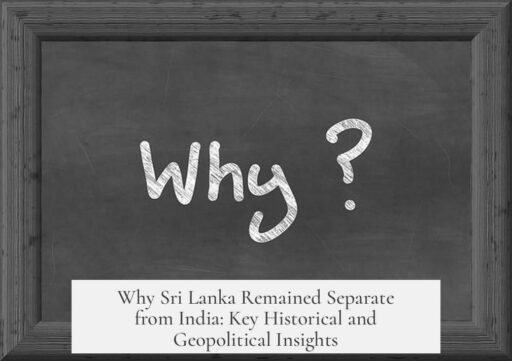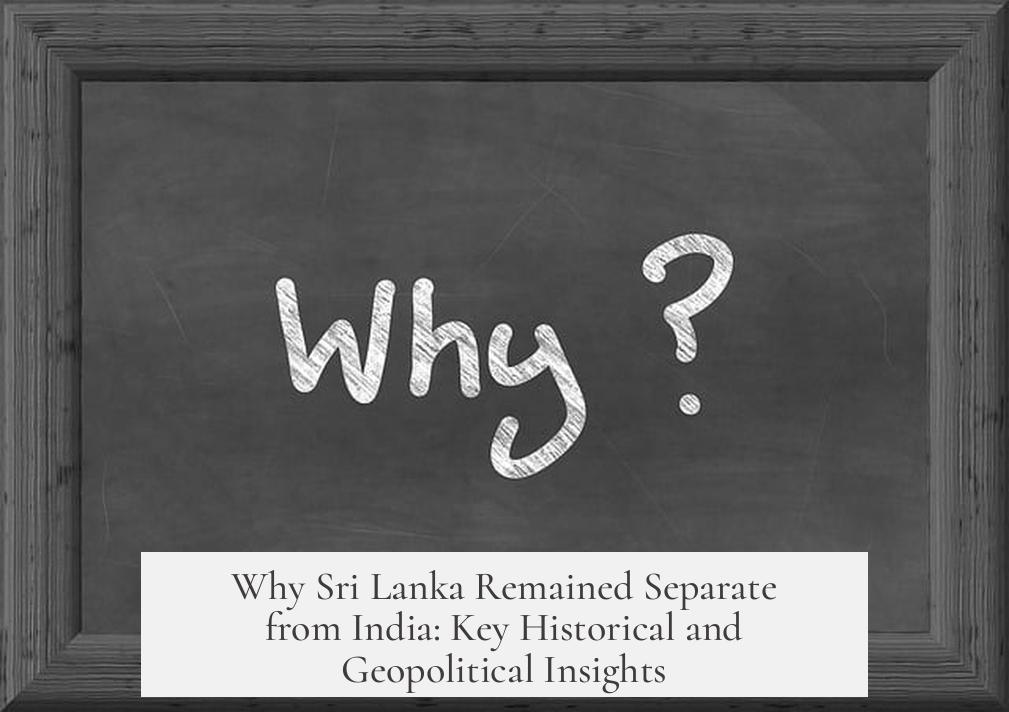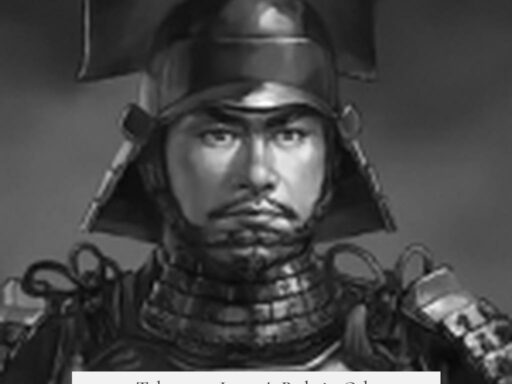Sri Lanka did not become part of India because it maintained a distinct political identity despite historical ties and geographic proximity. Though the island was once under the control of Indian empires like the Mauryas, Pandyans, and Cholas, these influences did not result in permanent unification as a single political entity.

Historically, Sri Lanka experienced varying degrees of integration with southern Indian kingdoms. It formed part of the vast Maurya Empire. Later periods saw control by the Pandyan and Chola dynasties. Frequent intermarriages and cultural exchange connected the island’s rulers with India’s southern dynasties, notably the Nayaks.
However, this historical integration relates to regional empires rather than the modern concept of nation-states. Sri Lanka emerged as its own sovereign entity known today as the Democratic Socialist Republic of Sri Lanka. This political independence from India reflects different historical trajectories for the island and the subcontinent.

Geopolitically, Sri Lanka’s location provided strategic value on ancient trade routes and military fronts, especially during the Silk Road era and World War II. The island’s deep harbors and position in the Indian Ocean gave it distinct maritime importance, reinforcing its separate identity.
Accessing India by land is easier due to the shared borders of India and its neighbors, unlike the island which is offshore. This physical separation helped maintain Sri Lanka’s political autonomy.

Economically, Sri Lanka’s goods and economic activities often mirrored those in southern India, preventing strong economic incentives for unification. Both regions shared similar exports, weakening ties that might push toward political merger.
| Key Reasons Sri Lanka Remains Separate from India |
|---|
| Historical Periods of Indian Empire Control, but distinct sovereign history |
| Strong cultural ties but distinct dynastic and political evolution |
| Geographic island separation preserving political independence |
| Strategic maritime significance independent of India’s territory |
| Similar economies reducing incentive for political merger |
- Sri Lanka’s history includes Indian imperial rule yet distinct statehood.
- Geography as an island maintains political separation.
- Cultural and dynastic links exist without modern political integration.
- Strategic importance enhances its individual identity.
- Economic parallels with India reduce merger incentives.
Why Didn’t Sri Lanka Become Part of India? Exploring History’s Untold Answers

So, why didn’t Sri Lanka become part of India? At first glance, it seems natural—two neighbors separated by a narrow stretch of sea. They share deep cultural ties and historical connections. Yet, Sri Lanka stands apart as an independent nation. Dive with me into history and geopolitics to uncover the fascinating reasons.
To start, the island of Sri Lanka, once known as Lanka, was indeed part of the Maurya Empire. This vast empire spanned a large part of the Indian subcontinent around the 3rd century BCE under Emperor Ashoka. The Mauryans extended their influence over Lanka, marking the early integration of the island within Indian polities. Yet, this integration was temporal and political, not a permanent union.
Following the Mauryan era, the Pandyan and Chola dynasties from South India also held sway over parts of Sri Lanka. Imagine a tug of war between powerful southern Indian kingdoms and Sri Lankan polities; this dynamic gave rise to both conflict and cultural blending. The Cholas, known for their naval power, controlled parts of the northern and eastern regions of the island occasionally, further weaving South Indian influence.
But this interaction went beyond mere invasions. There was a rich history of intermarriage and assimilation between Sri Lanka and South Indian kingdoms. Playwrights or historians would call this a classic example of integration through familial and social bonds rather than conquest alone. The last ruling dynasty of Sri Lanka—the Nayaks—were directly related to the South Indian Nayaks of Tamil Nadu, underscoring this deep-rooted connection.
So, if Lanka was part of Indian empires at times, why didn’t Sri Lanka become an official part of modern India?
This is where we must distinguish historical integration from modern statehood. The island’s association in ancient days doesn’t translate to contemporary governance or nationality. Historically, kingdoms and empires fluctuated rapidly, boundaries shifted regularly, but post-colonial nation states emerged with different principles—often based on ethnicity, language, and self-determination—not just past imperial reach.
Sri Lanka’s political identity took shape distinctly from India’s, especially under British colonial rule. When both countries gained independence in the 1940s and 50s, Sri Lanka emerged as the Democratic Socialist Republic of Sri Lanka, a sovereign nation separate from India.
Geopolitical Significance: Location Explained
The geography of Sri Lanka is a significant factor. The island sits strategically in the Indian Ocean with deep harbors that made it a critical stop along the ancient Silk Road. From ancient trade to World War II naval significance, Sri Lanka’s location was more than just a neighbor to India; it was a valuable maritime outpost.
This strategic importance arguably encouraged powers to maintain it as distinct from India rather than fully merge it. Even today, the ports in Colombo and Trincomalee attract global interest. Would India have been able to leverage this edge better if Sri Lanka was a state within it? Possibly. But history and politics rarely follow pure strategic logic alone.
Another simple yet glaring point: access. If access to India was the main goal, wouldn’t it have been simpler to manage direct mainland control rather than the island across the Palk Strait? Land borders facilitate governance and movement. Islands present logistical challenges, making full integration complex.
Economic Context: Same Neighbor, Same Goods
From an economic standpoint, Sri Lanka and India offered overlapping products: textiles, spices, and agricultural exports. The absence of unique or significantly distinct economic advantages may have played a role in why India did not absorb Sri Lanka. Why merge when your neighbor produces similar things, speaks closely related languages, and shares cultural heritage? Probably no pressing economic incentive existed to join the two fully.
This similarity could be a double-edged sword. Instead of driving unification, it might have encouraged complementarity without necessity for merger. Each country could focus on distinct markets or policies while enjoying cultural exchange and trade.
Why Does It Matter Today?
Understanding why Sri Lanka remained separate helps us appreciate how history, culture, geography, and politics shape nations. It dispels oversimplifications and nationalistic myths about destiny or cultural union. It also prompts one to ask: how do neighborly ties evolve differently from political integration?
For travelers, historians, and political enthusiasts alike, the distinctness adds charm to both India and Sri Lanka. It highlights the nuanced dance of influence versus sovereignty. And for policymakers, it emphasizes respecting distinct identities amid close connections.
Summary Table: Key Reasons Sri Lanka Didn’t Become Part of India
| Factor | Explanation |
|---|---|
| Historical Empires | Part of Maurya, Pandyan, Chola empires temporarily but no permanent unification into a single nation. |
| Intermarriage & Assimilation | Close cultural ties and dynastic relations, yet political sovereignty remained separate. |
| Distinct Modern State Formation | Post-colonial identities emerged independently for Sri Lanka and India despite shared history. |
| Geography | Island location with strategic harbors encouraged separation and unique strategic value. |
| Economic Overlap | Similar exports diminish economic incentives for merging countries. |
Next time someone ponders the “Why didn’t Sri Lanka become part of India?” question, you can break it down with historical nuance and geopolitical savvy. No, it’s not because they drifted apart on a raft! Rather, a complex interplay of empires, culture, geography, and modern politics kept these two vibrant neighbors proudly distinct.
Isn’t it fascinating how history shapes borders, and borders shape identities? What other neighboring countries share such intricate relationships but remain separate? Food for thought while sipping your chai or sipping Ceylon tea!
Why was Sri Lanka not merged into the modern state of India despite historical ties?
Though parts of Sri Lanka were ruled by Indian empires like the Mauryas and Cholas, the island maintained distinct political identities. Historical rule did not translate into modern political union.
Did cultural and familial ties between Sri Lanka and South India influence their political status?
There were intermarriages and assimilation between Sri Lankan and South Indian dynasties, such as the Nayak rulers. These connections were cultural, not political mergers.
How did Sri Lanka’s geographic location affect its political separation from India?
Its island status with deep harbors made it strategically important but physically separate. This geography helped maintain its autonomy instead of integrating into mainland India.
Was economic similarity a reason Sri Lanka stayed separate from India?
Both Sri Lanka and India had comparable exports. Sri Lanka’s economy did not provide enough incentive for political unification with India.
Did strategic importance prevent Sri Lanka from becoming part of India?
Sri Lanka’s strategic position on ancient trade routes and during conflicts like World War II meant it was valued independently. This reduced chances of political absorption by India.




